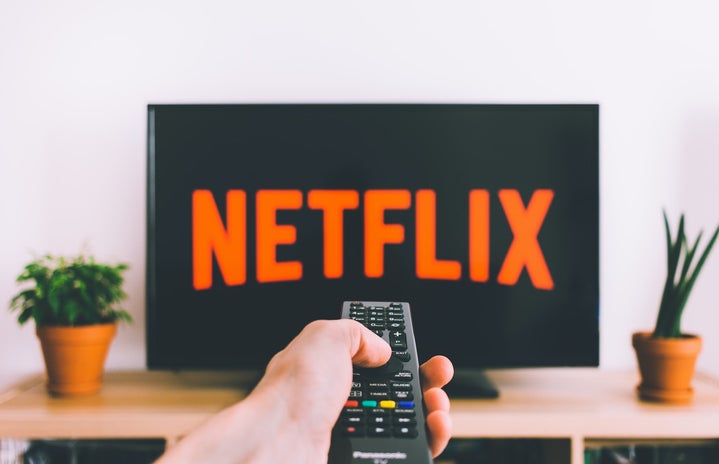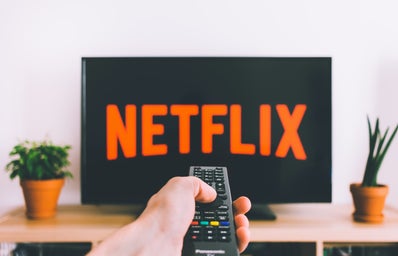Men love to take the lead at things they might not be super awesome at: politics, comedy and writing female characters in the media. There’s an increasing number of women who can’t escape unscathed from being sexualized, objectified, and commodified in television, prompting a whole slew of media discourse surrounding our representation.
Popular shows such as Sam Levinson’s “Euphoria,”Andrij Parekh’s “13 Reasons Why” and Bryan Elsley’s “Skins” are too familiar examples of the “manic pixie dream girl,” the cliche femme fatales and backhanded “make-over” girls.
Kat from Euphoria suffers a poorly written makeover era, Cassie messes around with the “forbidden bad boy,” Hannah Baker is Clay Jensen’s “dark muse,” Effie is glamorously self-destructive. Eyeroll.
There’s hope in salvaging the dynamism of women if we look at media created by women themselves (duh!). One of my favorite modern teen shows that executes the depth, humor, honesty and beauty of women is Laurie Nunn’s “Sex Education.” With its recently released final season, “Sex Education” has me yearning for another smash hit from Nunn, and taking an introspective look at womanhood and sexuality.
What I love about “Sex Education” is that archetypes are embraced through the lens of empowerment and every female character is sexy, independent, yet flawed in a realistic and fully developed way, which just goes to show that women write everything a lot more in depth and have a better understanding of writing female characters. Let’s leave this one for the women (and women identified).
SPOILER ALERT!!! For those unfamiliar with the show, it centers around the awkward sexual journeys of an array of quirky British teens. Main character Otis Milburn, played by a baby faced Asa Butterfield, climbs the social ranks of highschool by becoming a renowned sex therapist for students despite being extremely timid when it comes to his own sexual confidence.
Otis’ mom Jean Milburn (Gillian Anderson), strides with a sexual openness and confidence which sometimes lands her in clumsy situations even as a middle aged, single mom. She’s the OG sex therapist as well, mentoring our array of characters while maintaining her renowned respect in her profession. Jean reminds viewers that there is no set “age” when women have everything figured out, and that feeling desirable and alluring past the age of 30 is neither a fantasy nor delulu.
The girlbosses of seasons one – three consist primarily of Otis’ love interests Maeve Wiley ( Emma Mackay), Ruby Matthews (Mimi Keene), their friends Aimee Gibbs ( Aimee Lou Wood) and Olivia Hanan ( Simone Ashley). Supporting characters Vivienne, Ola and Lily weave their way through the narrative with their own unique stories as well.
I’ll admit, when I first watched “Sex Education,” I was skeptical of whether the obvious archetypes of these female characters would produce another cliche group of women. We were met with “cool girl/manic pixie dream girl” Maeve, queen bee and brash diva Ruby, ditsy and popular sweetheart Aimee, and Ruby’s sassy bestie Olivia – the only candidly brown girl out of these four.
As I finished each season of the show, I came to adore and relate to each of these characters in a special way. They each defy the rules of stereotypes and are given round, fully thought out narratives.
Characters Olivia and Ruby demonstrate a defiance of typical Asian household stereotypes. Olivia’s primary issues surround insecurities around her “O” face and feeling comfortable with her natural responses to sex. Actress Mimi Keene is of Middle Eastern descent, so taking this knowledge into account, we can assume Ruby also breaks the stereotype of a rigid Central Asian family life.
IMO, I believe that Olivia’s exploration of her sexual expression and movements encourage viewers to embrace spontaneity, which offers a better sexual and intimate experience between partners.
For Ruby, her brash and bold personality juxtapose her internal feelings of inadequacy due to her being sexualized and of a lower socioeconomic status. Her bright and expensive fashion is a paradox to her dim-lit apartment; her demanding personality masks a vulnerable daughter who cares for her terminally ill father.
What I enjoy about her storyline is that she actually goes from having a lot of sex, to settling down. She teaches audiences that even though it might be hard, staying true to your relationship goals is better than masking them with unfulfilling sexual experiences.
In contrast to the friendship between Olivia and Ruby, Maeve and Aimee are polar opposites that pair well together. Like Ruby, Aimee began as a popular girl, though she’s known to be more scatterbrained and sweet. She also engages in a lot of sex without much enjoyment from her male partners.
TRIGGER WARNING: This next part will briefly mention sexual assault, so please skip if uncomfortable.
Aimee’s story changes profoundly when she is sexually assaulted on a bus. We see her innocent views on sex change completely; she grapples with guilt, confusion, and shame after this moment. With time and support from Maeve, she blossoms into a confident woman who takes control of her orgasms through exploration of sex toys and getting to know her own body on her own terms. Viewers such as myself are encouraged to embrace self-pleasure rather than rely on another person to complete our sexual desires; we’re also introduced to a unique and well explored journey of healing which affirms that there is no set path to coping with trauma.
Though I haven’t finished this current season, I suspect a budding romance between her and character Isaac, which excites me. This awkward duo meets via an exchange where Aimee innocently says something insensitive to him surrounding his physical disability in a wheelchair. But, we are also gifted with this beautifully unraveled romance where Isaac introduces Aimee to the world of art and helps her find her own beat in the world, further demonstrating the charm of emotional bonds.
Enigmatic Maeve possesses all the starter qualities of a “manic pixie dream girl”- that is, her edgy style and dark makeup, affinity for feminist literature, and rough home life. In the beginning of the show, I was particularly anxious to see whether she would become Otis’ one dimensional star, or unravel into her own person. I’m pleased to say she is definitely not a “manic pixie dream girl”.
Maeve’s screen time and narrative allow viewers to get an intimate perspective on a forced early independence due to a neglectful parent who struggles with substance abuse. Since she was young, Maeve has led her own path and pursues her passions, breaking barriers. She is confident in her sexuality and juggles three different and diverse love interests in nerdy Otis, artsy Isaac, and sporty Jackson. While they are long distance, Maeve also takes the lead in exploring phone sex with Otis, allowing us to see the raw awkward moments of unrequited nudes and a boyfriend who struggles to be confident in his intimacy.
What I adore most about Maeve is how she never lets our main character Otis stop her from following her dreams, specifically when he wishes her to stay with him in the UK rather than study abroad in America for her writing talents. Though she loves and cares for him, she puts herself first and does not let a man’s agenda confine her. She reminds me that male validation is not necessary to feel successful, cool, and sexy.
Finally, we have my two favorite representations of diversity in newer characters Vivi and Aisha. Both women are Black and plus sized, the latter being something I’ve yearned for in the media for a while. Not often do we see plus-sized women, and I mean actually plus-sized, receive attention in positive, non-judgemental ways. There’s no path to feeling confident in a perceived “ugly” fat body, as these two are sexy and have no trouble finding lovers off the bat.
Though I’m not the biggest fan of Vivi’s “teacher’s pet” archetype, I do relate to the timidness of allowing oneself to be sexual and open to relationships. With so much focus on academic success, Vivi initially limits herself to career-building. In the newest season, she is introduced to a tall, muscular and physically contrasting classmate. He immediately shows genuine interest in getting to know Vivi as a person, finding her beautiful (rather than fetishizing her) and even becoming insecure of her friendship with Jackson! She’s confidently making boys sweat.
Rocking her vintage wolf t-shirts, Vivi is the antithesis of the over-sexualization of plus-sized women, especially those of color. She shares a charming kiss with her new beau and takes sex at her own pace, never subjecting herself to being an object for him. She also demonstrates a narrative which rejects the idea that WOC seeks validation from white men, a lesson I truly needed as a fat WOC. Though my current boyfriend is a white, conventionally attractive man, I don’t need his validation to feel hot! I’ll preface this are only opinions based on what I have finished of the season so far, so I’m hoping their relationship works out.
Juxtaposing Vivi, we have my favorite character, Aisha. She’s beyond gorgeous in her snatched jumpsuits and bright smile; she also happens to be hearing impaired, though this is not made to be a negative story nor her main story. For me, she offers some hope as a plus-sized WOC in the queer community. Aisha, like me, is extremely sexually fluid and easily attracts lovers who are fit and thin. There is a lot of discrimination towards fat WOC in the queer community and sex which bugs me.
Though I haven’t seen much of her yet, Aisha snags two lovers in her current partner, and nonbinary character Cal. The trio form a polyamorous dynamic, also diversifying the monogamous patterns previous throughout the show. With the perspective of a former highschool girl who was bullied for her weight, told she would never find love in the queer community, and fetishized, Aisha puts a big smile on my face. Plus-sized women of color deserve to feel sexy.
I take this show as a lesson that we’re all awesome and a bit clumsy in our own ways, and clumsy is good when you accept it as a natural part of growing up. Life is a constant trek of growth, not necessarily towards perfection. I think a lot of American filmmakers and Hollywood writers should take some heavy notes on Laurie Nunn’s masterpiece. I mean seriously, I’m starting to think that maybe, just maybe, the Brits actually do everything better?


